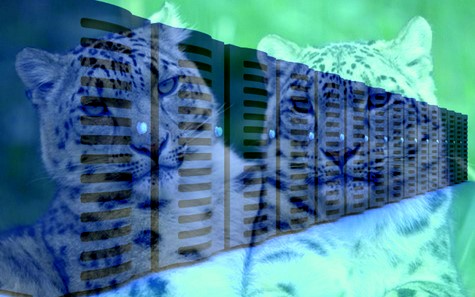Apple's Snow Leopard Completely Blows It Virtually


Built-in Hypervisor-based virtualization and paravirtualizized kernels are now de rigueur with every major x86-based enterprise OS on the planet, including on Linux, on all major UNIX OSes, and even on Windows Server. But on Mac OS X Snow Leopard, it's nowhere to be found.
I have said on numerous occasions that Apple has missed the boat when it comes to enterprise adoption. This is sad, really, when you consider how good an operating system Mac OS X really is, in that it is the only UNIX-based OS that really could have had any chance in displacing the status quo of Windows and Microsoft hegemony in large enterprise environments with a "full stack" for end-user acceptance as a desktop OS. Consumers may enjoy its niche status, but In the enterprise, Apple is a "Coulda Been" contender of unfulfilled potential.
Click on the "Read the rest of this entry" link below for more.
On the server side, if enterprises aren't running Microsoft-based infrastructure, it's Linux, which is now displacing traditional UNIX-based infrastructure. Linux now has the upper hand for scalable enterprise applications and is assuming its position as the new "mid-range" OS, but only because it is an open system which will run on all kinds of hardware and now has legions of developers who have completely bought into the Open Source ecosystem.
It seems that Apple is very good at missing key opportunities with their flagship OS. My colleague Robin Harris wrote about at length today in regards to where he feels Mac OS X Server and Desktop missed the boat with Snow Leopard -- the Zettabyte File System (ZFS). ZFS, which originally was developed by Sun Microsystems and is now part of the Solaris 10 and OpenSolaris operating systems, would really have allowed Mac OS X to outshine Linux in terms of storage scalability, reliability and performance for both consumers and enterprises.
For reasons unknown, Apple has dropped ZFS from both desktop and server versions of Snow Leopard. Could it have anything to do with Sun's and Solaris' uncertain future at Oracle? Does Apple know something that we don't? Did talks break down between Steve Jobs and Larry Ellison when it came down to licensing the code? Maybe, but unless Apple says why this highly anticipated feature was pulled from the OS, we'll never know.
However, while Robin thinks that storage was a major letdown in Snow Leopard, I think where Apple really blew it was in Virtualization, particularly with not shipping OS X Server or Desktop with a free hypervisor or making one available for download. I mean, come on, even Microsoft is shipping an enterprise-class hypervisor now, Hyper-V, for free, and it doesn't even require buying a copy of their OS to use it. Redhat and Novell have also had built-in virtualization (Xen and KVM) in their current OS releases, RHEL 5.x and SLES 10/11 for some time now.
Not only is Apple completely behind its competitors in terms of offering a hypervisor with their OS, but Mac OS X in and of itself is a non-player in terms of being able to integrate itself into existing virtual infrastructure. Case in point, every major version of Linux and Windows in use today can be easily paravirtualized to run as a high-performance virtual machine on VMWare ESX, any number of implementations of Xen, and on the KVM hypervisor built into the Linux kernel.
Windows 7, which isn't even available in retail channels yet, and Windows Server 2008 R2 are both paravirtualized and fully optimized out of the box to run on Microsoft's own Hyper-V, and getting either of these to run smoothly on VMWare ESX is a non-issue, as paravirtualized VMWare Tools for Windows have been updated to support them. When both of these OSes are released to customers for enterprise deployment, enterprise virtual infrastructure will be ready for them. Snow Leopard, not so much.
Right now, only one hypervisor and paravirtualization solution exists for Mac OS X, and it's sold by Parallels. Now, given how far behind Apple is in the virtualization game, it would behoove them to purchase Parallels and adopt their hypervisor, but even I don't see how this is going to help them in the long run.
For Mac OS X to gain any inroads in the datacenter and to get any mind share in the Virtual Server and Virtual Desktop Infrastructure (VDI) space, Apple will have to get their OS running on commodity blades from the major datacenter players -- IBM, HP and Dell -- and on the predominant hypervisors -- VMWare, Hyper-V and Xen -- or face permanent "contenda" status in the enterprise. I just don't see enterprises perceiving any value in bringing in pricey, esoteric XServe hardware to run in its own silos/islands when they already have existing or planned investments in standardized VMWare or Hyper-V virtual infrastructure. Like Hermey the Misfit Elf, Mac OS X just won't fit in.
I suspect, however, Apple will have to solve these problems sooner, if not later. With their plans of a 500,000 square foot data center in North Carolina emerging, they're going to have to do something to maximize density and floor space if they are going to become a leading citizen of the cloud.
Has Apple blown it with virtualization on Snow Leopard? Talk Back and Let Me Know.